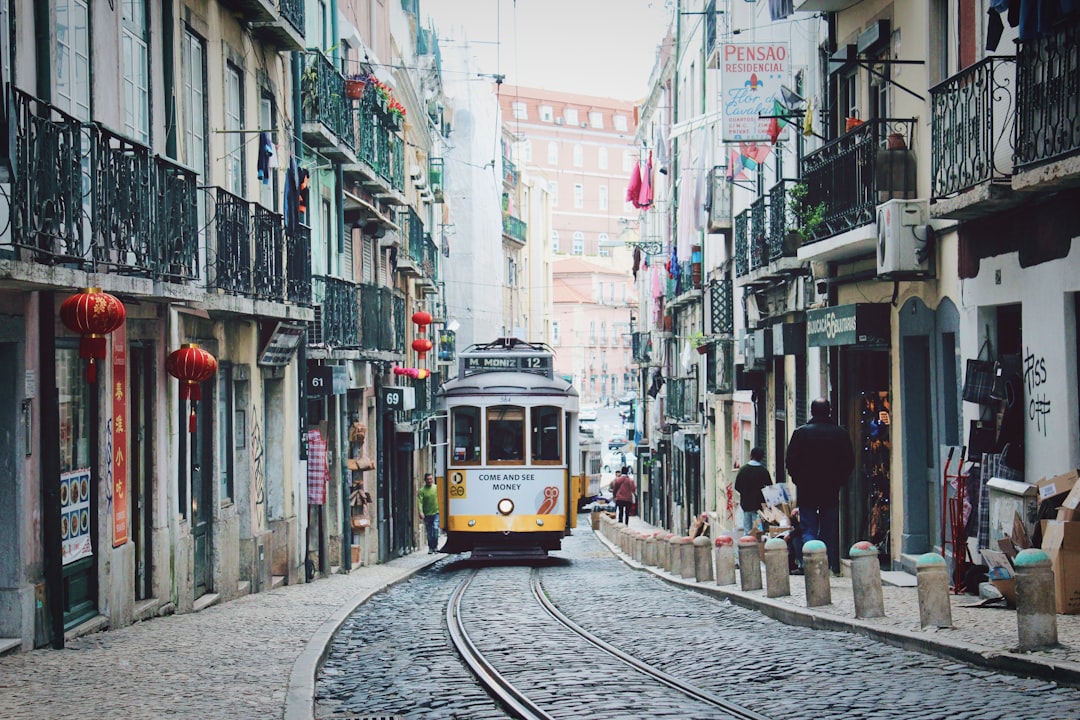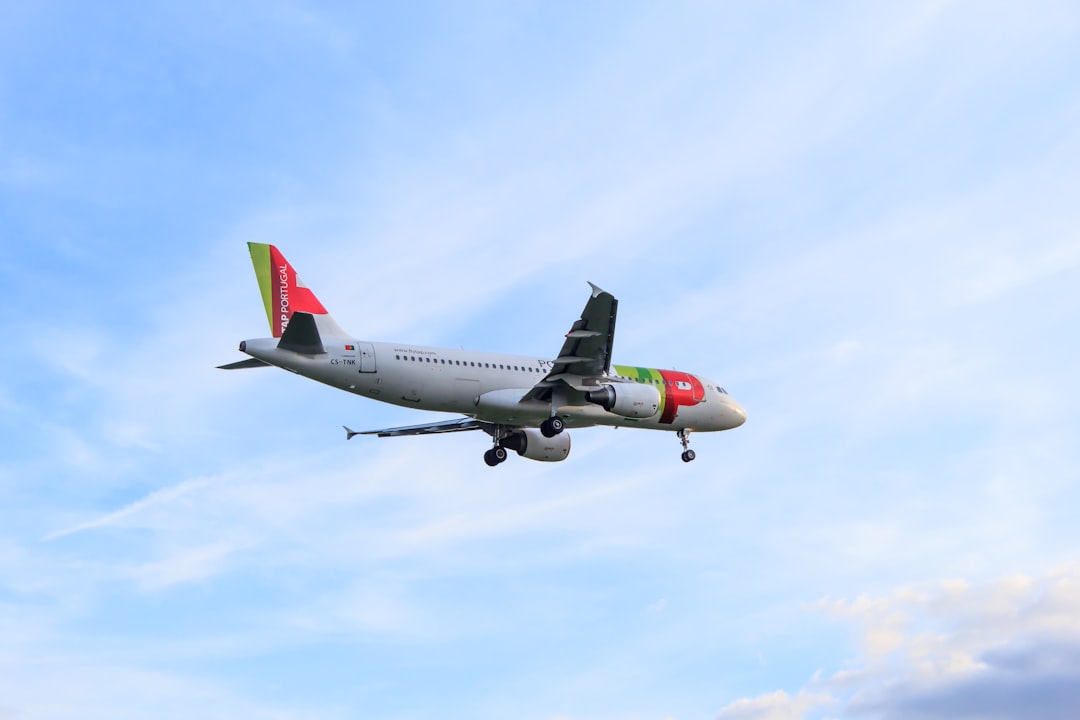TAP’s Turbulent Takeoff: Tracing the Rollercoaster History of Portugal’s Flag Carrier
TAP's Turbulent Takeoff: Tracing the Rollercoaster History of Portugal's Flag Carrier - Spreading Wings Across Europe
TAP Air Portugal, the flag carrier of Portugal, has undergone tremendous growth and change since its founding in 1945. In the early years, TAP primarily operated domestic routes within Portugal using a small fleet of DC-3 and DC-4 aircraft. But it had ambitions to spread its wings beyond Portugal's borders.
In 1947, TAP inaugurated its first international route to Madrid. This kicked off a rapid expansion across Western Europe over the next decade. By 1960, TAP served major cities like London, Paris, Brussels, and Geneva. Flying Britannias, Friendships, and eventually 707 jets, TAP established itself as Portugal's link to major European business and tourism hubs.
TAP's expansion reflected Portugal's economic boom and desire to connect with the wider world after years of isolationism. Aviation allowed TAP to shrink distances and bring Portuguese culture and commerce abroad. But it wasn't always smooth flying. Many routes were unprofitable,requiring government subsidies. And regulations set by other countries constrained where TAP could fly.
Nevertheless, TAP pushed onward, eventually serving over 50 destinations across Europe by the 1970s. It cleverly marketed multi-stop "triangle" routes to entice passengers to exotic locales like Beirut, Tel Aviv, and Istanbul with a stop in Lisbon. TAP also tried to appeal to niche markets,like religious pilgrims and immigrants traveling home.
What else is in this post?
- TAP's Turbulent Takeoff: Tracing the Rollercoaster History of Portugal's Flag Carrier - Spreading Wings Across Europe
- TAP's Turbulent Takeoff: Tracing the Rollercoaster History of Portugal's Flag Carrier - Navigating Political Turbulence
- TAP's Turbulent Takeoff: Tracing the Rollercoaster History of Portugal's Flag Carrier - Near-Bankruptcy Brings Bold Changes
- TAP's Turbulent Takeoff: Tracing the Rollercoaster History of Portugal's Flag Carrier - Spreading Wings Across the Atlantic
- TAP's Turbulent Takeoff: Tracing the Rollercoaster History of Portugal's Flag Carrier - Building a Modern Fleet for the Future
- TAP's Turbulent Takeoff: Tracing the Rollercoaster History of Portugal's Flag Carrier - Connecting Portugal to Its Former Colonies
- TAP's Turbulent Takeoff: Tracing the Rollercoaster History of Portugal's Flag Carrier - Facing New Challenges in Privatization
- TAP's Turbulent Takeoff: Tracing the Rollercoaster History of Portugal's Flag Carrier - Charting TAP's Uncertain Course Ahead
TAP's Turbulent Takeoff: Tracing the Rollercoaster History of Portugal's Flag Carrier - Navigating Political Turbulence
As TAP spread its wings in Europe, it often faced turbulence from political unrest in Portugal and beyond. The postwar years were a time of authoritarian rule and censorship in Portugal under António de Oliveira Salazar. The regime imposed strict limits on personal freedoms and political dissent. This instability at home made TAP's international expansion more difficult.
The airline's operations were disrupted by larger geopolitical issues as well. When Israel, France, and Britain attacked Egypt in 1956 during the Suez Crisis, several of TAP's Middle Eastern routes were suspended. These kinds of external shocks were outside of TAP's control but still impacted its business.
TAP also grappled with the politics of European integration. Portugal remained neutral during World War II and was not a founding member of organizations like the European Coal and Steel Community or the European Economic Community (EEC). This made TAP something of an outsider in discussions about air travel regulation in the Common Market.
The EEC's goal was to create a single air transport market across Western Europe. But Portugal's absence from early negotiations meant TAP did not have a seat at the table. It had to lobby separately for Fifth Freedom rights allowing airlines to carry traffic between two foreign countries.
Portugal eventually joined the EEC in 1986 after democratization. This gave TAP new opportunities but also new competition. As the Common Market abolished restrictions on intra-European flights, major carriers like British Airways and Lufthansa expanded into Lisbon alongside TAP.
TAP thus constantly adapted its strategy in response to external political factors. It leveraged colonial links to airports in Africa like Luanda and Lourenço Marques (now Maputo) to get around restrictions. Partnerships with other airlines also helped TAP extend its reach. Joining the IATA clearinghouse in 1947 and Star Alliance in 2005 boosted TAP's global footprint.
TAP's Turbulent Takeoff: Tracing the Rollercoaster History of Portugal's Flag Carrier - Near-Bankruptcy Brings Bold Changes

As TAP spread its wings beyond Portugal and Europe, it took on ever-increasing financial risks. Many of the airline’s new long-haul routes lost money but were seen as strategically important for economic development and national pride. This expansion was fueled by easy credit, but the debts were piling up.
By 1993, TAP was teetering on the brink of bankruptcy. Years of government subsidies and unprofitable operations had bloated its workforce and left it saddled with crippling debt. As a state-owned entity, TAP had little incentive to control costs or rationalize its far-flung network.
But Portugal’s accession into the European Union required TAP to make drastic changes to ensure its survival. With the EU phasing out national airline subsidies, TAP had to modernize and ‘rightsize’ to compete on its own merits.
The restructuring process was painful but overdue. TAP slashed thousands of staff through attrition, early retirement, and layoffs. Unproductive long-haul routes to Asia and the Americas were suspended. And remaining operations focused on shuttling traffic through TAP’s Lisbon hub.
By 1997, TAP had completely transformed itself into a leaner, more efficient airline. And the EU approved over $250 million in restructuring aid and loan guarantees to keep TAP aloft. Additional injections of aid followed in 2001 and 2006.
Critics also argued that too much capacity had been stripped, limiting TAP’s ability to meet demand. Lisbon was being bypassed as European travelers chose other hubs like Madrid and Frankfurt instead.
The airline experimented with new cooperation models to sustain niche routes. Government grants specifically subsidized flights to smaller overseas destinations with large Portuguese populations like Providence, Rhode Island and Luanda, Angola.
Codesharing with partner airlines also allowed TAP to maintain its global footprint at lower cost and risk. For example, a joint venture with Brazil’s TAM Airlines made connections beyond TAP’s European network possible.
TAP's Turbulent Takeoff: Tracing the Rollercoaster History of Portugal's Flag Carrier - Spreading Wings Across the Atlantic

Spreading its wings across the Atlantic was the next logical step in TAP's global expansion. As Western Europe's frontier, Portugal was perfectly positioned as a gateway for traffic between Europe, North America, and South America. TAP aimed to leverage its geographic advantage to become the dominant transatlantic carrier.
The airline inaugurated service to New York in 1966, helping to catalyze mass tourism to Portugal. Additional US destinations like Boston, San Francisco, and Los Angeles followed over the next decade. These routes aligned with migration patterns, linking Portuguese communities in North America with family and opportunities back home.
TAP also served major cities across Canada like Toronto and Montreal. Despite challenges from US and Canadian airlines, TAP found success marketing Lisbon as the shortest, most convenient connecting hub between eastern North America and Western Europe.
By the mid-1970s, TAP carried over 500,000 passengers annually across the North Atlantic. But it wanted to push further into the Americas. Under Portugal's authoritarian Estado Novo regime, TAP was encouraged to reinforce colonial ties with Brazil and Portuguese territories in Africa.
So in 1975, TAP launched flights to Rio de Janeiro and Luanda, Angola using long-range 747s. However, these routes initially lost substantial sums and had to be subsidized by the government. They were more about national prestige than commercial viability.
When Portugal's colonies gained independence in 1975, TAP worked diligently to maintain its privileged links to Lusophone countries. The airline offered special fares and service targeted at Brazilian travelers. By the 1990s, TAP served ten major Brazilian cities, carrying over 2 million passengers per year.
The need to rationalize unprofitable long-haul operations was a key driver of TAP's restructuring in the 1990s. But transatlantic service remained central to TAP's identity and profitability. North Atlantic routes kept generating hard currency and feeding the Lisbon hub.
With its fleet renewal, TAP also positioned itself to capture rapid growth in transatlantic traffic this century. Old 747-200s were replaced with next-generation A330s and fuel-efficient A350s. This slashed operating costs while providing a superior customer experience.
TAP's Turbulent Takeoff: Tracing the Rollercoaster History of Portugal's Flag Carrier - Building a Modern Fleet for the Future
As TAP charted its uncertain course in the 21st century, renewing its aging fleet became an existential priority. The right aircraft would be instrumental to TAP’s strategy of positioning Lisbon as Western Europe’s leading gateway to the Americas and Africa.
TAP’s 1980s-vintage Airbus A310s and Boeing 747-200s were obsolete gas-guzzlers. Maintenance costs were exorbitant and reliability was poor. Yet financially-strapped TAP could not afford an outright purchase of next-generation long-haul planes.
The solution was sale-leaseback deals to induct new planes without huge upfront capital outlays. In 2000, TAP signed a $500 million agreement with GE Capital Aviation to lease four new A330-200s. Deliveries began in 2003, allowing TAP to retire its last tri-jet A310s.
More A330-200s arrived in 2008 fitted with lie-flat business class seats and upgraded in-flight amenities. These new jets had lower operating costs and improved passenger comfort on key North Atlantic runs. TAP could better compete with rivals like SATA Internacional's A310s.
Next, between 2013 and 2016, TAP inducted A330-900neos, A350-900s, and A320neo family aircraft for short and medium-haul flights. With their new engines and aerodynamic refinements, these planes delivered double-digit efficiency gains over prior generations.
TAP configured its A330neos with 298 seats including 34 lie-flats business class pods. The A350-900s featured 286 seats with 48 fully-enclosed business suites. This premium-heavy layout reflected TAP’s concentration on high-yielding long-haul markets.
The neos and A350s slashed fuel burn by up to 25%. Their operating economics were far superior, even though lease costs were higher. TAP could finally start retiring its fuel-guzzling A340 quad-jets.
By 2019, TAP's fleet totaled 96 aircraft with an average age of just 8 years. Fuel efficiency had improved by 17% compared to 2009. Such modernization was essential to control costs and maximize the advantage of Lisbon’s geography.
According to Fernando Pinto, TAP’s CEO, “Our location allows us to use Lisbon as a natural hub to the North Atlantic and South Atlantic. That's why these new-generation planes are so important for our strategy."
The final piece was renewing TAP's medium-haul fleet. In 2019, the airline received its first A321LRs, able to fly 4,000 nautical miles. These jets opened new thin long-haul routes to the Americas and Africa that struggled to fill larger A330s.
TAP's Turbulent Takeoff: Tracing the Rollercoaster History of Portugal's Flag Carrier - Connecting Portugal to Its Former Colonies
When Portugal's African colonies gained independence in the 1970s, TAP worked hard to maintain its privileged links to these newly sovereign nations. While other European airlines pulled out of former colonies, TAP redoubled its commitment to serve Lusophone countries in Africa and South America. These regions held major personal, cultural and economic significance for Portugal.
According to Fernando Pinto, CEO from 2000 to 2018, "It's in our DNA to fly to Brazil and Portuguese-speaking Africa." Aviation reinforced bonds between citizens across continents. It also facilitated growing investment and trade between Portugal and its former colonies, especially energy-rich Angola.
TAP's colonial heritage was a competitive advantage in winning traffic rights to profitable African routes. The airline offered special fares and connections tailored to immigrants traveling home to Cape Verde, Guinea Bissau, Sao Tome, and Mozambique. Serving the scattered Portuguese diaspora was an important part of TAP's public service mission.
According to Antonio Couto, a Lisbon ground services manager, “We have links to these countries for historical reasons. TAP is still seen as the preferred way to fly home by many immigrants here.”
Nowhere was this truer than in Brazil. After independence, Brazilians could finally travel freely abroad, and many chose tours to “mother” Portugal. By the 1990s, TAP served ten major Brazilian cities including popular beach destinations like Recife and Salvador. TAP carried over 2 million passengers annually between Brazil and Portugal, making it one of the largest foreign airlines in Brazil.
TAP cleverly promoted Portugal as an attractive European stopover point for Brazilians traveling onwards to North America and Europe. Lower fares than KLM or Air France via their European hubs made TAP a popular option. According to Paulo Simoes, TAP’s VP Sales for the Americas, “We offer very competitive prices, especially for North Triangle traffic São Paulo–Lisbon–London or Lisbon–Paris.”
Joint ventures were critical to TAP’s success in Brazil. A close partnership with Brazilian airline TAM beginning in 2003 reinforced TAP's position. The airlines could align schedules, share costs, and coordinate marketing efforts. TAM also helped TAP seamlessly connect dozens of Brazilian cities through its domestic network. Transfer traffic via Lisbon jumped 22% in the first year of their partnership.
TAP's Turbulent Takeoff: Tracing the Rollercoaster History of Portugal's Flag Carrier - Facing New Challenges in Privatization

After decades as a state-owned enterprise, TAP Air Portugal faced an uncertain future as Portugal's government moved forward with privatization plans. The struggling flag carrier had undergone multiple restructurings and still relied on infusions of state aid to remain solvent. But EU rules no longer allowed perpetually subsidizing inefficient national airlines. Privatization was the only path forward that would unlock needed capital and instill commercial discipline in TAP's operations.
However, privatizing TAP would be fraught with challenges. As an instrument of public policy focused on development goals over profit, TAP was saddled with debts, bloated payrolls, and unviable routes that were commercially unappealing. The airline would need massive reorganization to attract suitors. Politically-motivated meddling in TAP's strategy was also a concern for potential private investors wary of acquiring a former state entity.
TAP's first attempted privatization in the early 2000s failed due to insufficient restructuring and lack of interest during a post-9/11 aviation downturn. After accumulating over €1.2 billion in state aid since the 1990s, TAP tried again in 2015. With Portgual's economy stabilizing, the government pushed through long-delayed cuts, spinning off ground handling, catering, and maintenance into separate companies.
A 61% stake in the airline was sold to Atlantic Gateway, a consortium owned by Brazilian-American aviation magnate David Neeleman and Portuguese investor Humberto Pedrosa. Neeleman's record of reviving airlines like Canada's WestJet and Brazil's Azul gave confidence he could turn TAP around. Atlantic Gateway invested €170 million and promised further capital injections.
Under private management, TAP finally started posting consistent profits by 2017 as Europe's economy recovered. Tourist traffic to Portugal boomed. But conflicts soon emerged between Neeleman's team and the Portuguese government. The state still held a 39% stake and sought to influence TAP's commercial decisions for political reasons. Disputes arose over financial transparency, route network changes, and growth plans.
By 2020, coronavirus devastated global travel demand and TAP was bleeding €4 million per day. The airline required a massive €1.2 billion government bailout to survive. With TAP on the brink, Portugal's government seized the opportunity to re-nationalize the carrier, regaining 72.5% control. Neeleman's share was diluted to just 22.5% as he exited management.
TAP's Turbulent Takeoff: Tracing the Rollercoaster History of Portugal's Flag Carrier - Charting TAP's Uncertain Course Ahead
As TAP enters the 2020s under state control again, its future course remains filled with uncertainty and challenges. The covid-19 pandemic has devastated global travel demand, and TAP is no exception. Having already accumulated billions in debt, TAP's very survival depends on how nimbly and effectively management can navigate the difficult years ahead.
TAP finds itself caught between public service obligations and commercial realities. As Portugal's flag carrier, TAP is expected to maintain unprofitable routes to remote islands, former colonies in Africa and South America, and diaspora destinations abroad. Portuguese citizens view TAP as an embodiment of national identity and prestige. However, continued EU scrutiny means TAP cannot just be an instrument of government policy. It must operate sustainably as a business.
The airline's costly fleet renewal has left TAP with ongoing leasing costs despite grounded planes. Management must thread the needle between rightsizing capacity while still serving key points like Brazil and North America. TAP's widebody-centric fleet is heavy with premium seats that could prove hard to fill in a prolonged downturn.
Yet TAP's greatest advantages remain its fortress hub in Lisbon and its strong links across the Atlantic and to Africa. Under CEO Christine Ourmières-Widener, TAP plans to reinforce its positioning as the Western gateway connecting Europe, the Americas and Africa. Simplified fare categories were introduced to compete with low-cost rivals.
TAP's commercial partnerships will be critical going forward. renewing the joint venture with United Airlines will be a priority to maintain TAP's access to North American markets. In South America, partnerships with LATAM and Azul can keep TAP's network robust despite reduced frequencies. Azul founder David Neeleman retains his board seat at TAP, underscoring the two airlines' close relationship.
Ourmières-Widener has warned that returning TAP to profitability could take until 2025. But she expresses confidence that "TAP is key to the recovery of the Portuguese economy and tourism." The airline's colonial heritage and strong cultural links across continents give TAP a competitive edge. It will focus on incentivizing travel from growing economies like Brazil while attracting Europeans to visit or connect via Lisbon.
